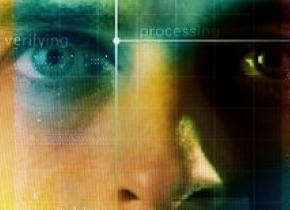
计算机在人脸识别上与人类抗衡
现如今,最好的面部识别算法与最优秀法医的识别效果无异。但最好的结果源于人力与计算机功能的结合。
撰稿:克里斯托弗·因塔格里亚塔Christopher Intagliata.
翻译:张心茹
审校:郭晓
Google and Facebook both do a nice job identifying your friends in photos—a testament to how good machines have gotten at studying human faces. But how well would an algorithm fare, when pitted against a forensic facial examiner… the experts that testify in court?
谷歌和脸书都能正确地识别出照片中你的朋友,这是对机器识别人脸功能的一种检验。但与在法庭上作证的专家——面部识别法医相比,算法的表现如何呢?
"Well it turns out the best algorithm is comparable to the best humans." Jonathan Phillips, a facial recognition scientist at the National Institute of Standards and Technology.
“事实证明,最好的算法与最优秀的法医表现相当。”美国国家标准与技术研究院面部识别科学家乔纳森·菲利普说。
He and his colleagues presented 20 very difficult image pairs to human experts, and a range of algorithms. And the most up-to-date algorithms did indeed perform as well as the skilled humans.
他和他的同事们分别向法医专家和一系列算法展示了20对很难分辨的图像。最先进的算法确实与经验丰富的法医表现一样好。
But when Phillips and his team asked for input from two humans, or a human and an algorithm, it was the combined judgment of humans and machines that won out… providing near perfect results. Which suggests the pooled strengths and weaknesses of human brains and computer code add up to superior accuracy. The study is in the Proceedings of the National Academy of Sciences. [P. Jonathon Phillips, Face recognition accuracy of forensic examiners, superrecognizers, and face recognition algorithms]
但当菲利普和他的团队让两个人或一人一算法合作识别图像时,他们发现人和机器的合作判断是最出色的,可以给出近乎完美的答案。这说明人脑和计算机代码的种种优缺点混合在一起,大大提高了识别的准确性。这项研究发表在《美国国家科学院学报》(Proceedings of the National Academy of Sciences)上。
Phillips says now it's now up to the facial recognition community to use these findings to improve the tests in real-world settings. And don't worry: human recognizers won't be out of a job anytime soon.
菲利普说,使用面部识别的群体现在该用这些发现来提高现实社会中的识别测试了。但不用担心,人工识别者暂时不会失业。
"Just because an algorithm says i give you a high score you don't just accept the word of that black box… you develop ways of integrating human judgment into the decision you get out of an algorithm itself." After all someone—preferably, a human—still has to explain the findings in court.
“只是因为一种算法给出一个高分,而你不接受这个未知系统给出的意见。于是你研发了一中方法,将人类判断整合到你从算法中得到的判断中。毕竟有的人——最好是真人,仍需在法庭上解释这个发现。
未经书面许可任何人不得复制或镜像
京ICP备11000850号
 京公网安备11010502039775号
京公网安备11010502039775号 信息网络传播视听节目许可证0111611号
国家科技基础条件平台

















